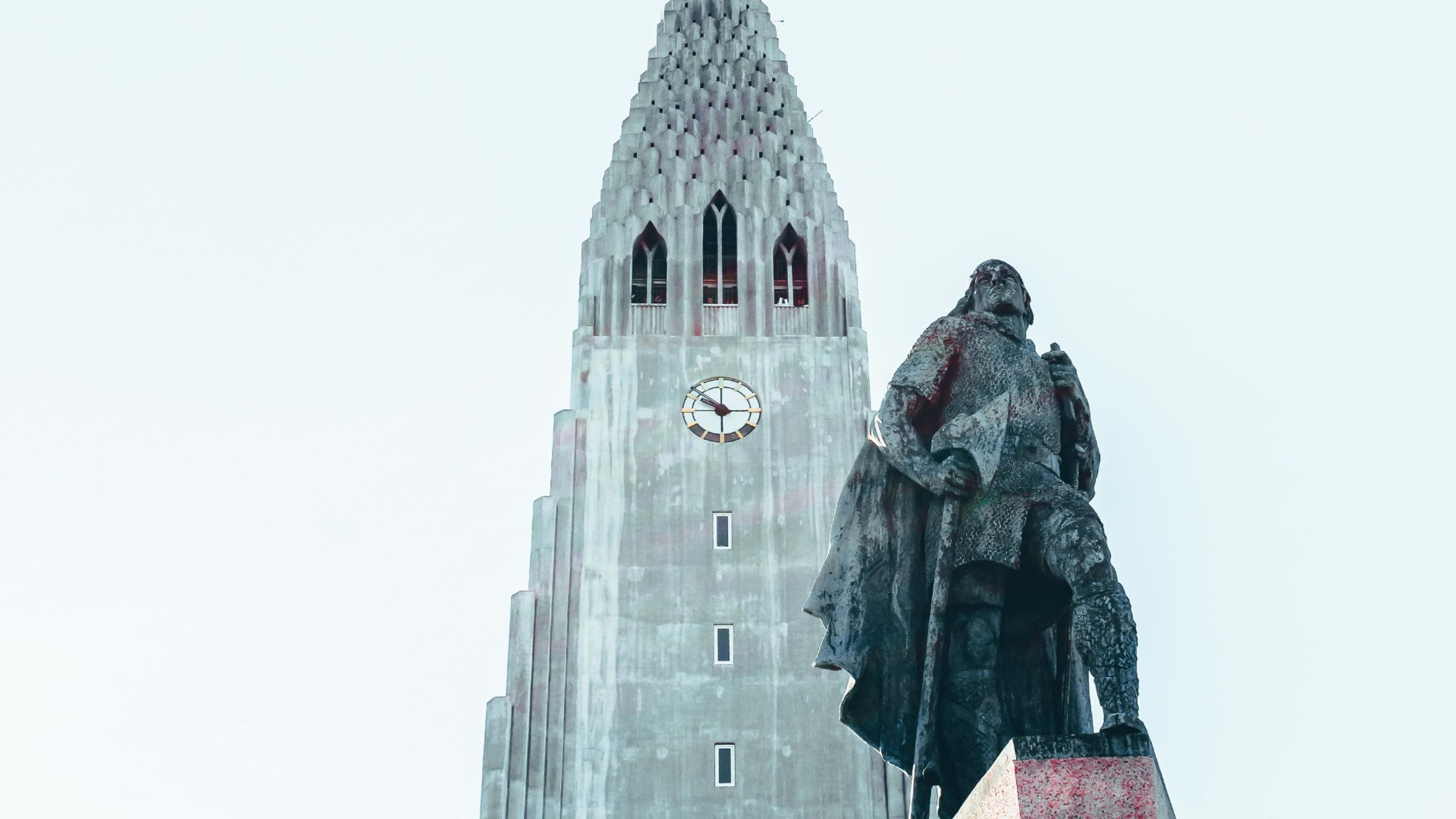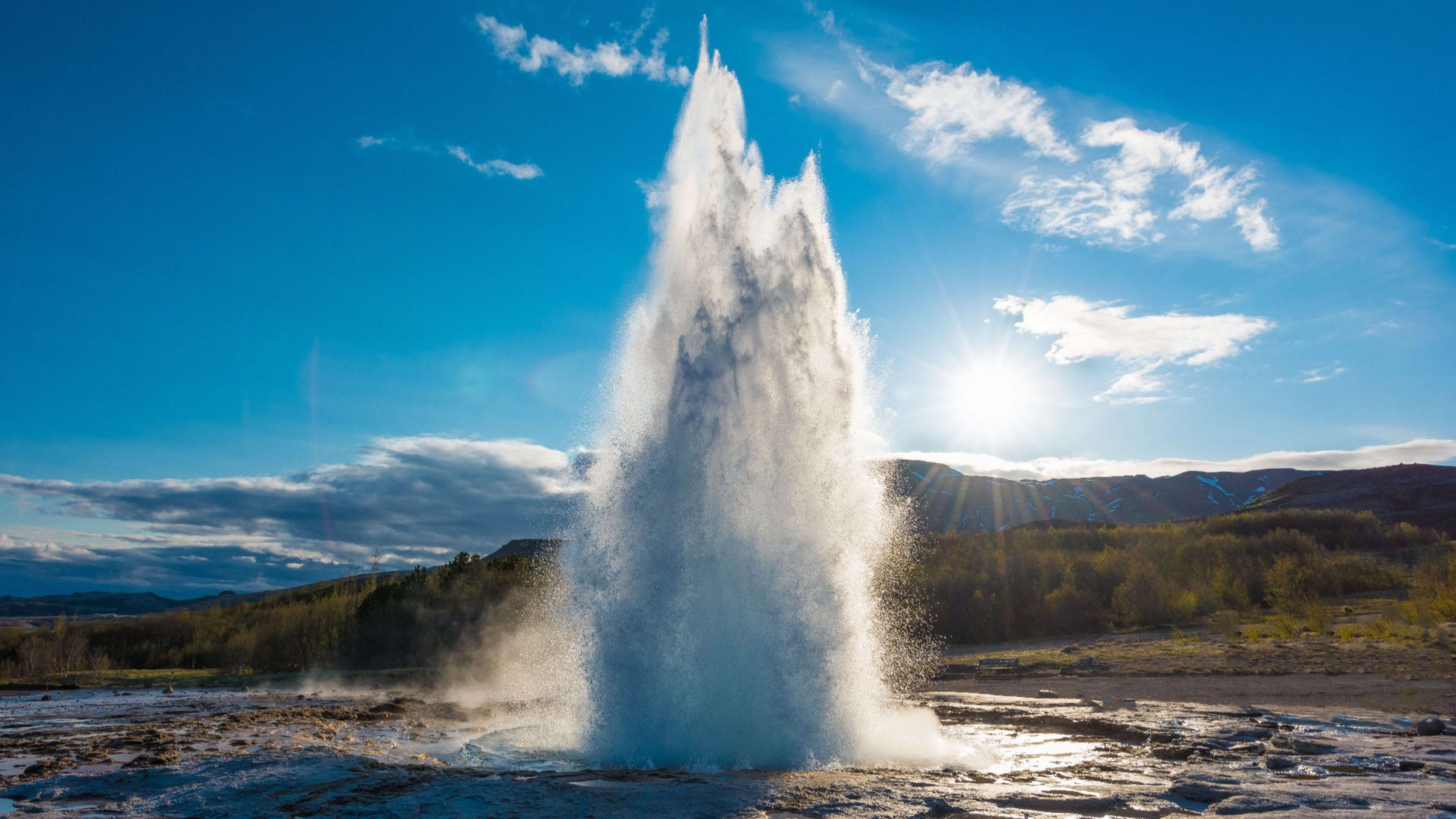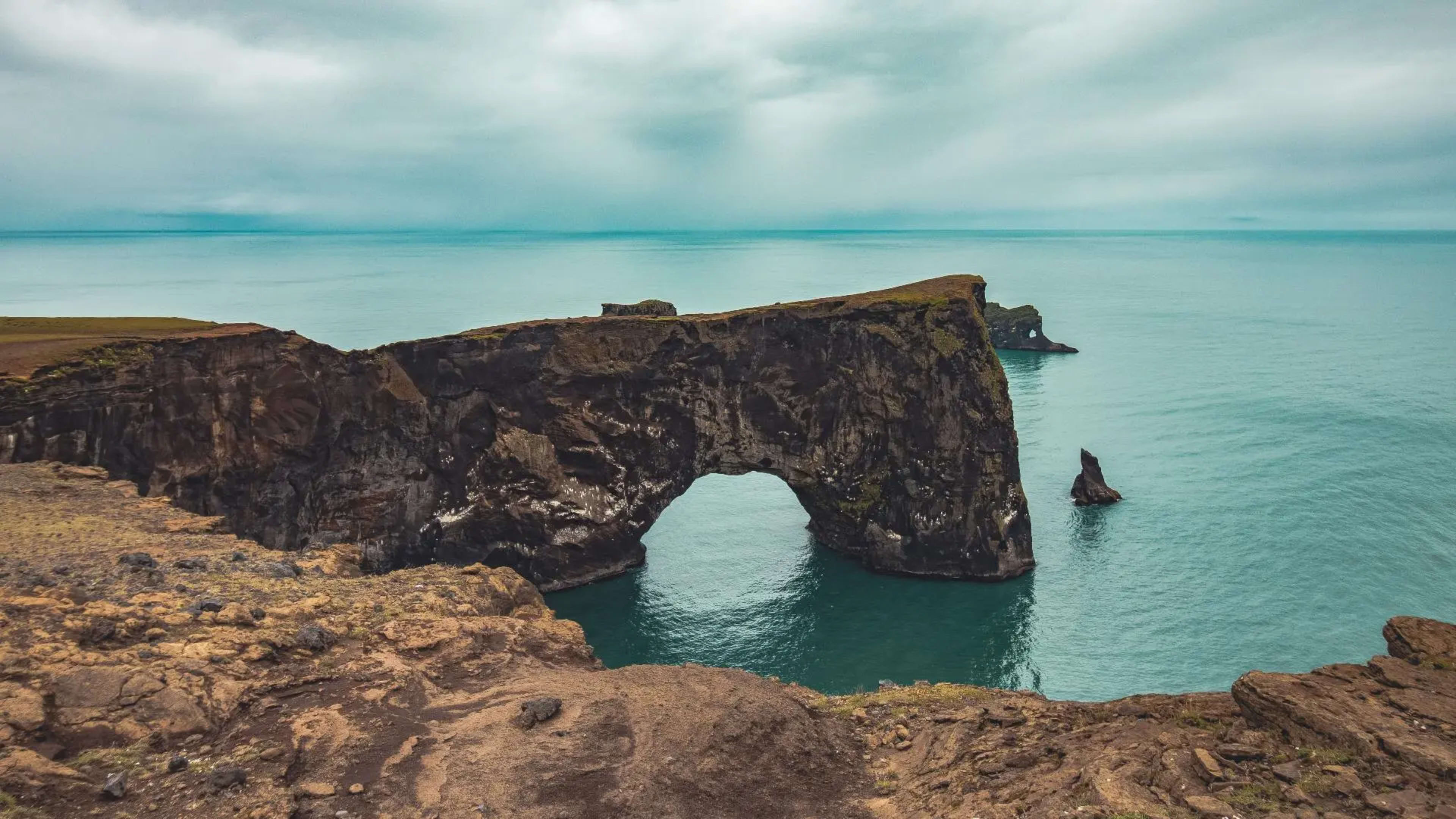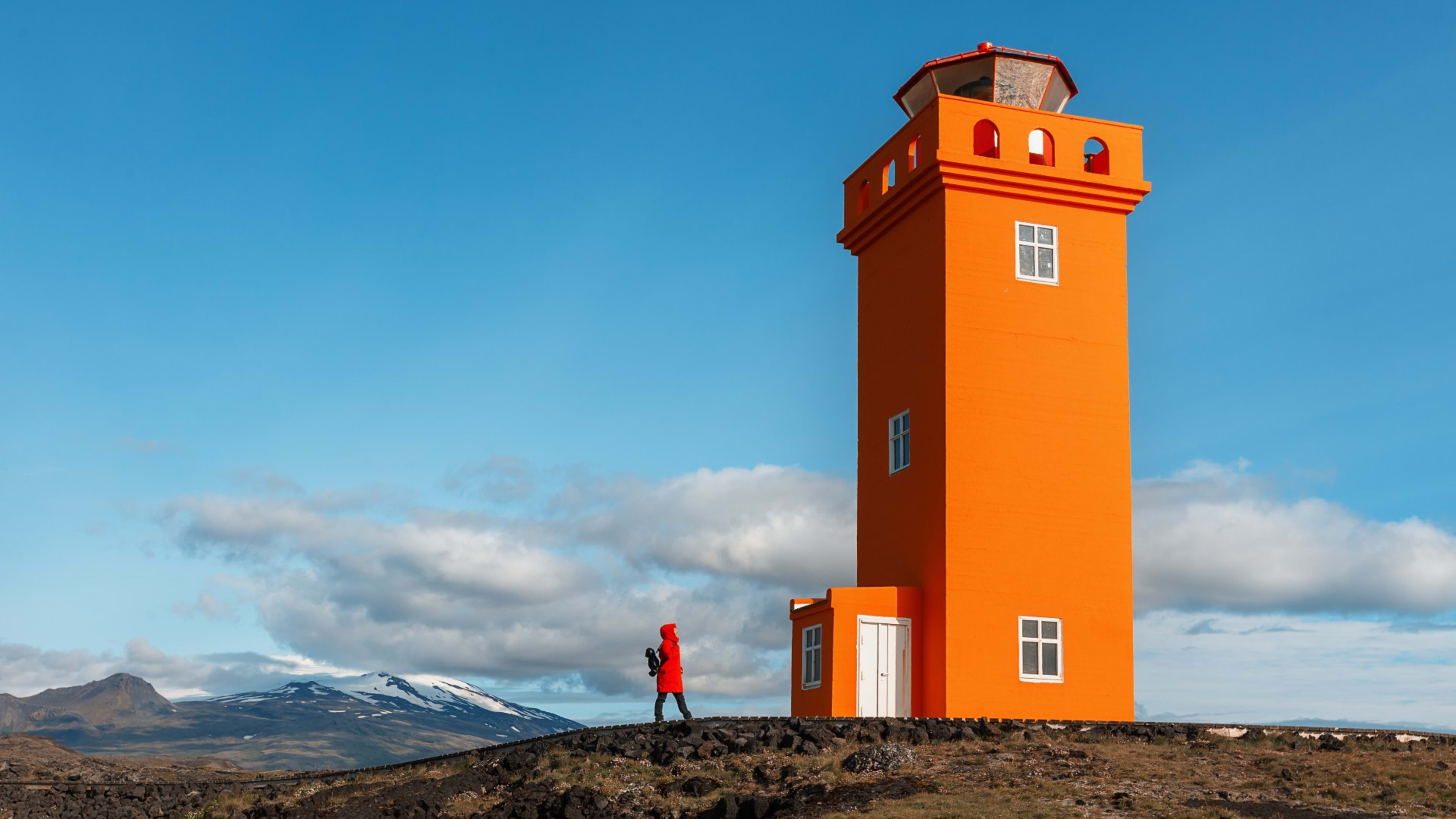Icelanders are undoubtedly the descendants of Vikings. Before the Vikings arrived in Iceland, the country had been inhabited by Irish monks but they had since then given up on the isolated and rough terrain and left the country without even so much as a listed name.
So, when the Viking started arriving to the Land of Fire and Ice, they tried their hand at giving it a title that would stick. Ideas such as Thule, Sæland and Garðarshólmi have been found in documents, but none of them particularly caught on.
It wasn’t until Hrafna-Flóki, one of the early travelers in mid-9th century, stayed in Iceland over winter that Iceland got its name. One day after the harsh winter, he walked up to one of the surrounding mountains near Flókalundur and found himself overlooking fjords packed with ice. The name stared him in the eye and Iceland came to be.
- Follow in the footsteps of Vikings on an Iceland vacation.
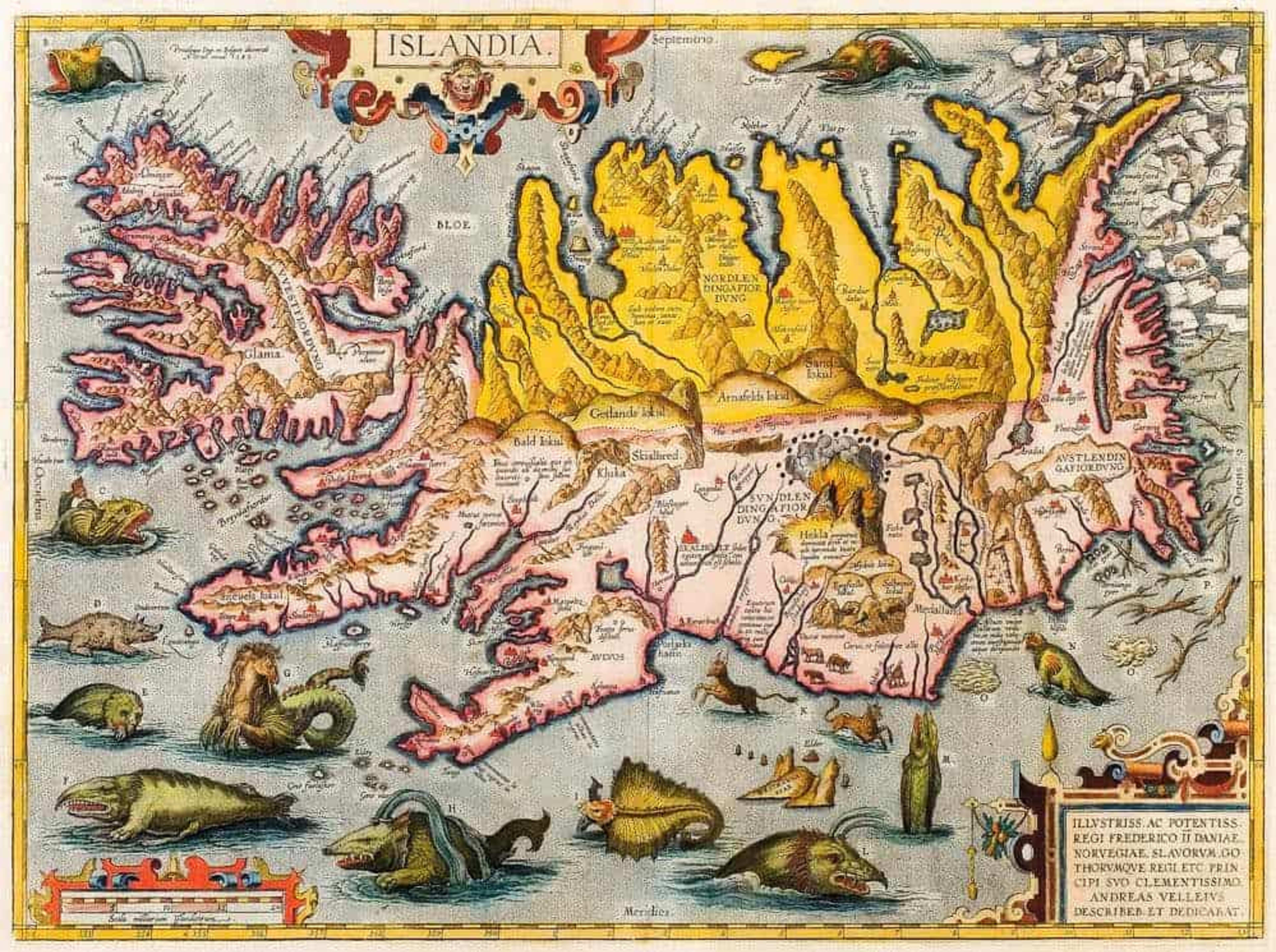
Nowadays, Hrafna-Flóki is still one of Iceland‘s best-recognized Vikings. He infamously sailed to Iceland and brought with him his 3 ravens, one of which eventually flew back with a straw in mouth indicating in which direction Hrafna-Flóki should sail to.
This is believed to be how he found his way to Iceland. He, however, like many, would return to Scandinavia. As it turns out, Icelandic nature is a force to reckon with, endured by only the most stubborn of humans.
The one who is given credit as the first Icelandic settler is Ingólfur Arnarson, as he was the first to stay permanently in the year 874, and chose Reykjavik, the capital of Iceland, to be his home. His brother, Hjörleifur, came with him accompanied by a flock of men.
Still today you’ll find locations and symbols originating from those men. Not only in place names but also in commemorative statues and rebuilt settlements all around the country. This is why many say that when you visit Iceland, you’ll quickly see that Icelanders are extremely proud of their heritage.
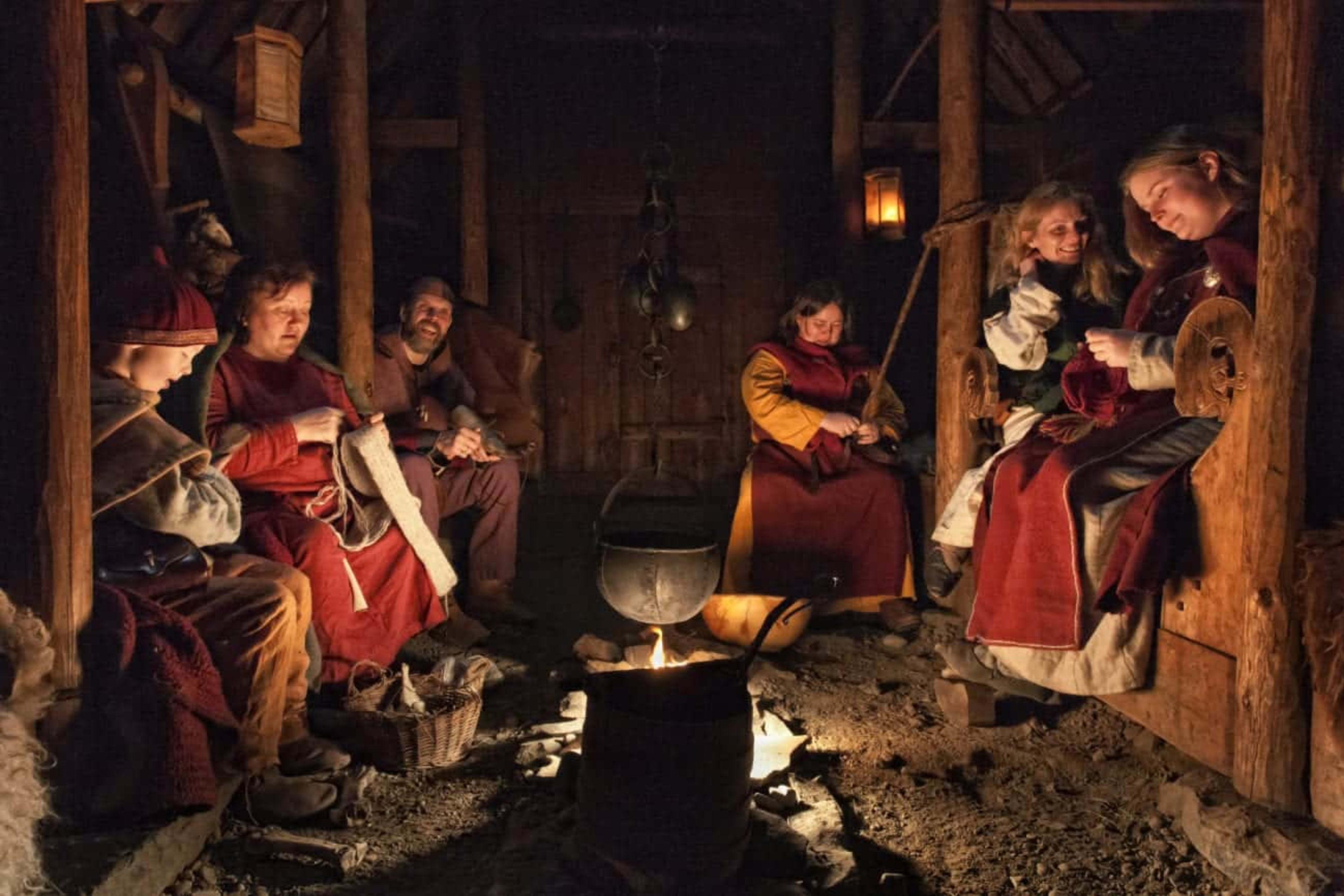
There are many different ways for you to explore the Viking age in Iceland. Like all historical sites, they are best enjoyed with a little pre-existing knowledge. So, this blog is here to help.
Let’s start by going over some of the fun facts, followed by the most famous Vikings, eventually leading to some tips on fantastic places and activities that really set the scene for your full Iceland Viking experience.
Fun facts about the Vikings of Iceland
- Many of the Vikings that came to Iceland were simply fleeing rules and regulations in the Scandinavian countries. Many say that this is why Icelanders have always been hard to tame.
- The Icelandic Vikings founded one of the first democratic parliaments in the world!
- The Vikings did not wear hats with horns on them, instead Viking warriors wore metal helmets resembling those found in other parts of Northern Europe at that time.
- Far from what was common at the time, Viking women in Iceland could divorce their men. Furthermore, they could inherit property!
- Typical Viking hobbies included wrestling, horse riding, swimming, racing, building things, chess, archery, competitive eating, and competitive drinking.
- Archaeological findings have proven that Viking men and women wore jewelry, it had more to do with status/wealth rather than gender.
- Upon arrival, the Vikings built turf houses to live in and some of those can still be visited to this day!
- One of the more famous and celebrated of the Vikings is Auður Djúpúðga, a female Viking who ran her own crew and settled in Iceland.
- Before the Vikings came to Iceland, Irish monks had taken up a settlement. However, this didn’t last long and they had left before getting a chance to mix with the Nordic voyagers.
- Some say that Náttfari, a slave of Garðar Svavarsson (the one who named Iceland ‘Garðarsholmi’) might have been the first to settle Iceland in early 9th century. However, since he was a slave he has never received credit.
Where did the Vikings in Iceland come from?
Who these Vikings were can be a bit hard to explain, as the word ‘Viking’ has various meanings in different languages. For some it means ‘someone who sails’, for others the word is more of an occupation.
Historically it has often been linked with violence, which is perhaps not surprising given that Vikings did raid towns and villages on their journeys across the seas, famously taking anything they wanted. This enable them not only to increase their wealth but also to kidnap workers, and even future wives.
The majority of male settlers came from the Nordic countries, largely Norway. However, most female settlers came from the British Isles. This further supports the theory that Vikings kidnapped women.
Who were the most famous Icelandic Vikings?
1. Ingólfur Arnarson
Ingólfur Arnarson, the founder of Iceland, traveled to Iceland with the intention to settle there permanently after he was made an outlaw from Norway. This is thought to have been around 870 AD.
He traveled with his sister, brother-in-law and their families. After a long journey across the North Atlantic, they laid out to sea two large wooden logs and then sent their slaves to find where they had landed. He pledged to settle where they would land.
The search took 3 years but he kept his promise, settling in a bay we now know as Reykjavík, Iceland’s capital.
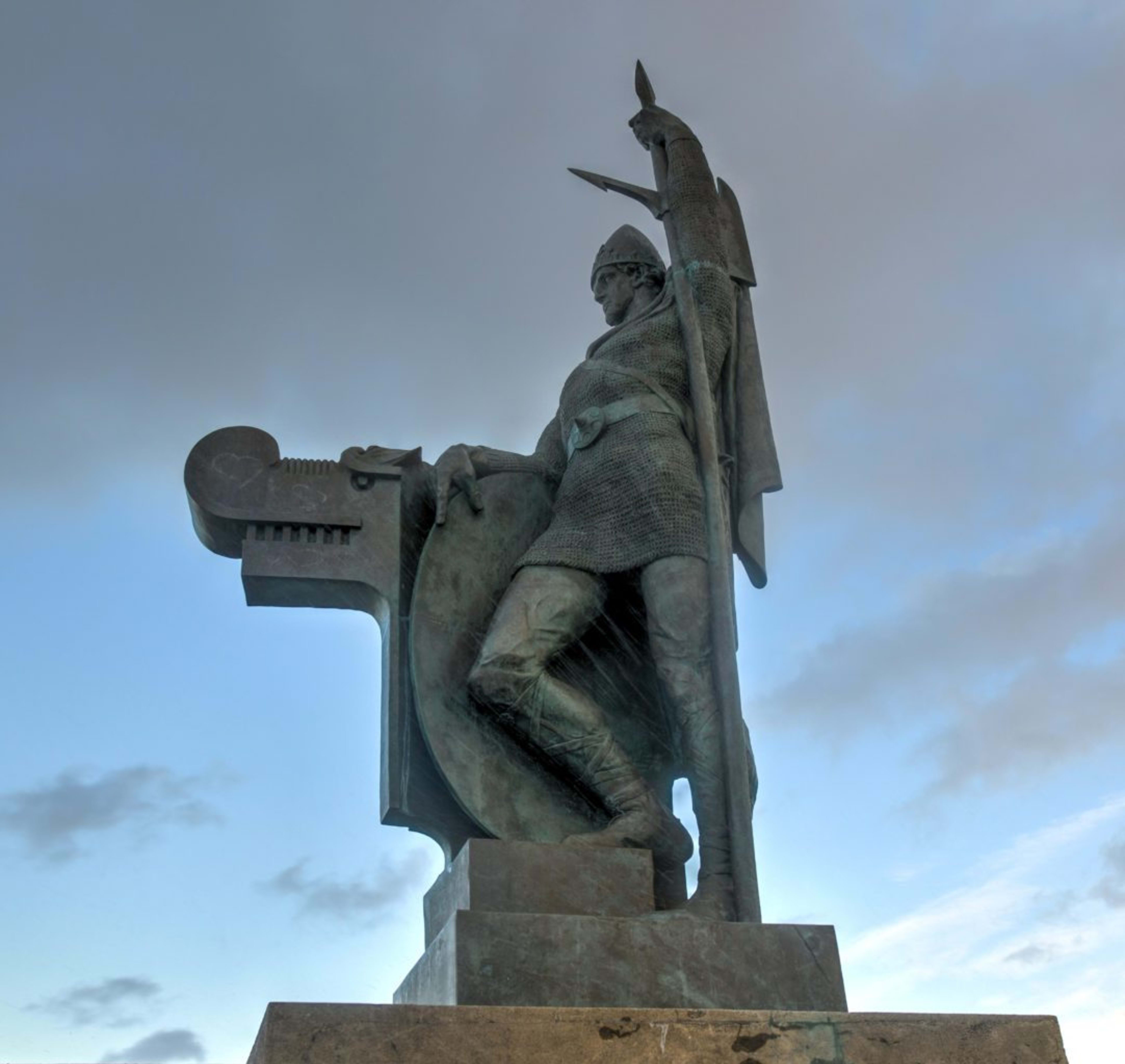
You can find a statue of Ingólfur Arnarson right across from Harpa Concert Hall. It stands tall on the hill Arnarhóll, also named after our Viking settler.
2. Auður Djúpúðga Ketilsdóttir
Auður Djúpúðga came from a noble lineage and married Ólafur the White. Her son would later become a king in northern Scotland. However, when the son was overthrown and killed, her status became unstable.
By this point in time, her husband had passed and there was no prospect of revenge or reconciliation. So Auður had a ship prepared in secret out in the woods, slowly gathering stock and food for a journey to Iceland.
When the ship was all set and ready to launch, she set off, traveling with her daughter in law and family. In the famous Laxdæla saga, Auður is said to have ‘traveled with twenty free men’. On her way to Iceland, she stopped in Orkney and married off one of her granddaughters, doing the same in the Faroe Islands.
When Auður arrived in Iceland in the late 9th century, her ship broke off the coast of Iceland near Selfoss, but everyone made it out alive. She traveled to see her brother, Helgi, who lived in Kjalarnes, but when he could only host half of her crew she left him and traveled further north to try her luck with her brother Bjarni.
He would host them all for the winter, but come spring she traveled once again, this time settling in Dalalönd near Hvalfjörður. She gave many of her fellow travelers part of her land, but she herself named her farmstead Hvammur.

A few years later, Auður decided to marry off her grandson and give him her farm as a wedding gift. The wedding was planned to last 3 days and to be a funeral service for her as well.
Not long after she passed and was buried on the beach. She did this due to the fact that at this time there was no church in Iceland and therefore no holy ground to lie in, as Auður had been christened.
3. Erik the Red
Born in Norway but having moved to Iceland as a young man, Erik the Red sailed from Iceland to Greenland and is credited to have ‘found’ it.
He of course didn’t, as there were indigenous people there already. However, he is credited for the world’s first publicity stunt naming the country this fertile name to get people to move over!
Furthermore, he is also the father of Leif the Lucky who is sometimes credited to have found America. Again, another place that was already settled. Leif the Lucky however didn’t settle long-term North America and the reason is said to have been that it was hard to keep slaves in America, because there was too much good land for them to escape to. In Iceland, this wasn’t much of a problem.
You can see Leif’s statue in front of Hallgrímskirkja cathedral in downtown Reykjavik.
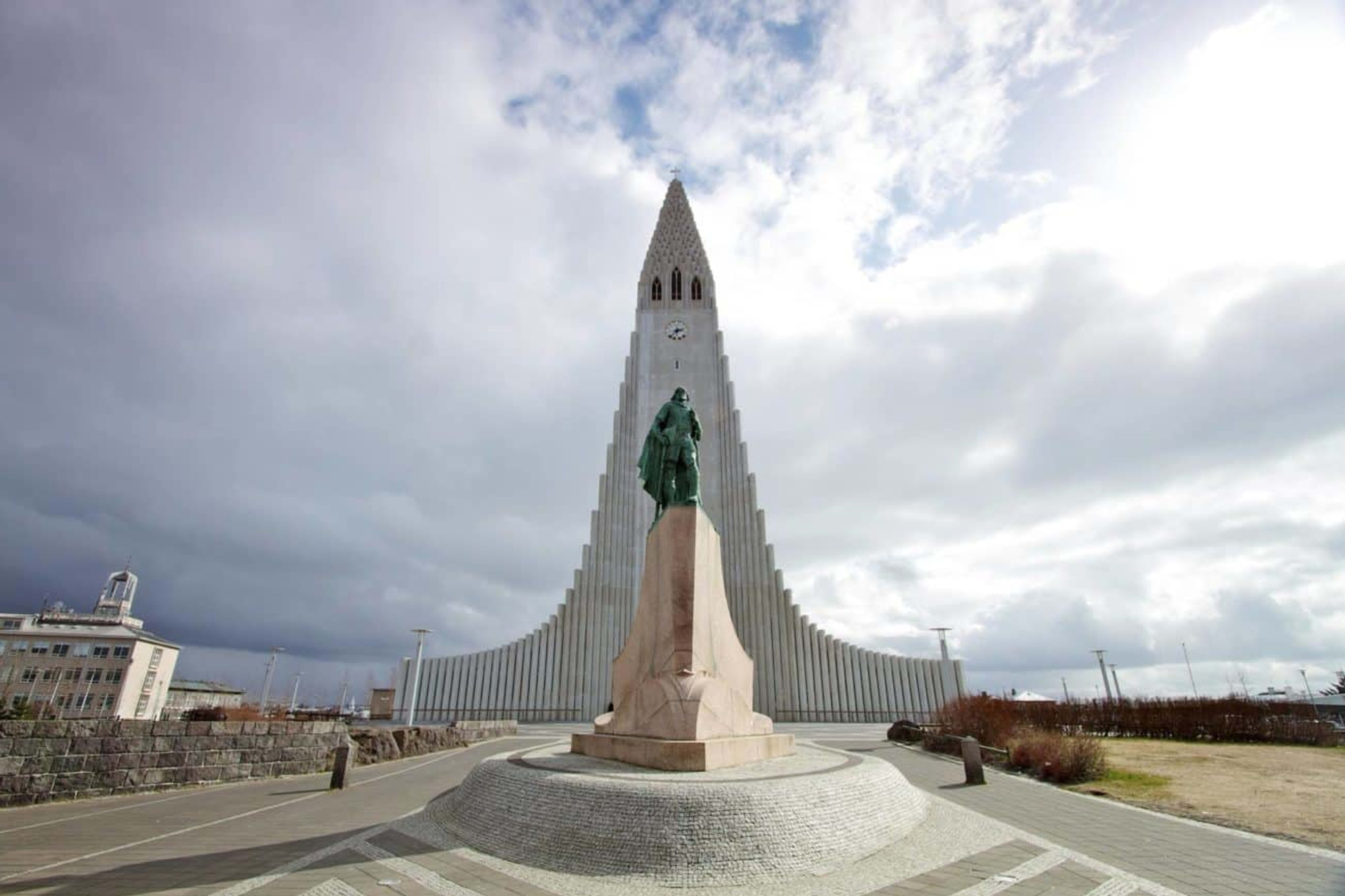
If you want to visit the homestead of Erik the Red, named Eiríksstaðir it has now been turned into a beautifully preserved museum.
Other notable characters during the first few centuries in Iceland
- Grettir Ásmundarson
- Egill Skallagrímsson
- Gunnar á Hlíðarenda
- Hallgerður Langbrók
- Snorri Sturluson (who wrote Sturlungasaga)
- Ari the Wise
Viking tours and activities in Iceland
If you are looking for an extensive guide on how to travel like a Viking in Iceland, look no further. Below you will find a quick peak into how to incorporate these interesting historical stories into an impressive Viking tour of Iceland.
1. Viking Sushi Boat Tour
Sushi might not be the first thing that comes to mind when you think of taking on the role of an Icelandic Viking.
However, if you really think about it they did a lot of sailing and eating fish, and that is pretty much what you will be doing on this incredible freshly caught sushi experience. The Viking Sushi Boat Tour takes the Viking to a modern age!

2. The Viking Village Festival in Iceland
In early June every year, the town of Hafnarfjörður is buzzing with all things Viking-related. If you go to the town center, you can literally just chase the scent of burning meat and you’ll arrive in the most magical 9th-century setting. It literally feels like you just time-traveled!
- Related: Best towns & cities in Iceland to visit.
The Vikings (who are actually just normal people who live parts out of their years as actual Vikings) set up camp, cook, sell souvenirs, fight, and craft, and you can join in!
3. Viking World Museum
The Viking World Museum is located in Faxaflói bay near Keflavík airport. The exhibitions are incredibly detailed with inputs from global institutions, such as the Smithsonian. My favorite part is ‘the Icelander’, a full size and fully equipped replica of a Viking ship, like the ones they used when sailed to Iceland.
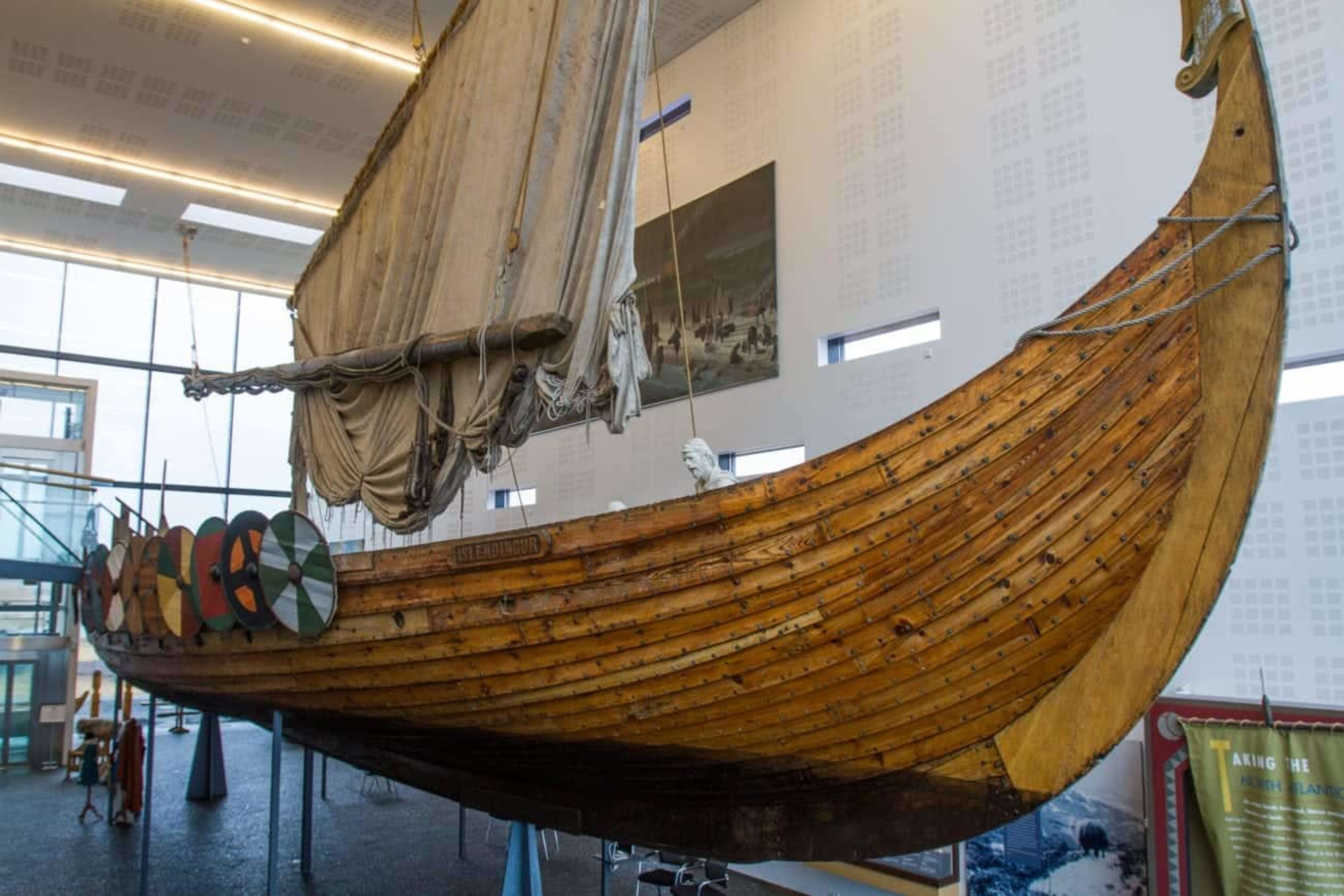
If you are looking to explore the Norse settlement and Icelandic history a bit more, this is a stop for you!
4. Tasting Viking-style beer
Iceland might not be a tropical island with an abundance of fruits and fertile gifts, but what the land gives the locals have gotten expert at utilizing.
This being said, Icelanders can grow barely locally and have access to intensely great water. Are you following? I am of course talking about the delicious beer in Iceland. Don’t leave the island without a sip.
5. Visiting the Sun Voyager

A stroll around Reykjavik is not complete without a stop at the stunning Sun Voyager down by the sea. Its inspiration is undoubtedly from a Viking ship and its location simply makes for the most idyllic scene. No matter the season, this iron sculpture never ceases to amaze!
6. Traveling to Stokksnes
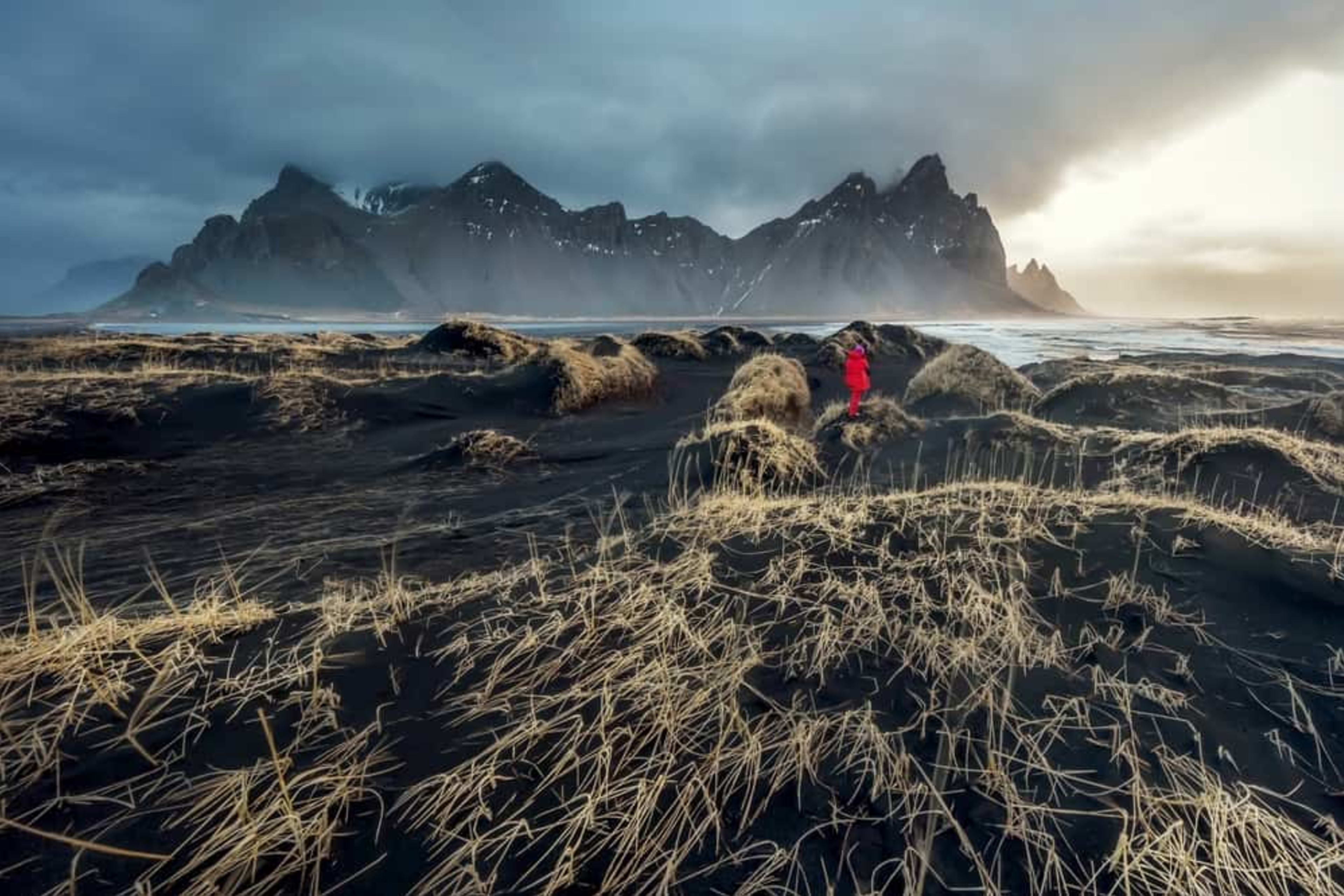
Stokksnes (or Vestrahorn, it goes by a few names) is one of those places that you truly take your breath away. It is located in East Iceland and was, up until a few years ago, only known to the close-knit local community.
Today you might recognize the setting from Instagram representations of Iceland as the location has gotten very popular with the grammers. However, Stokksnes still somehow manages to keep its remote feel as Iceland might have looked like before anyone settled.
The vast open space really is awe-inspiring. You can’t help but relate to the Vikings that decided to stay.
7. The Settlement Exhibition
The Settlement Exhibition in downtown Reykjavík is built around the ruins of an old Viking Longhouse. This is one of the oldest man-made structures ever to be found in Iceland!
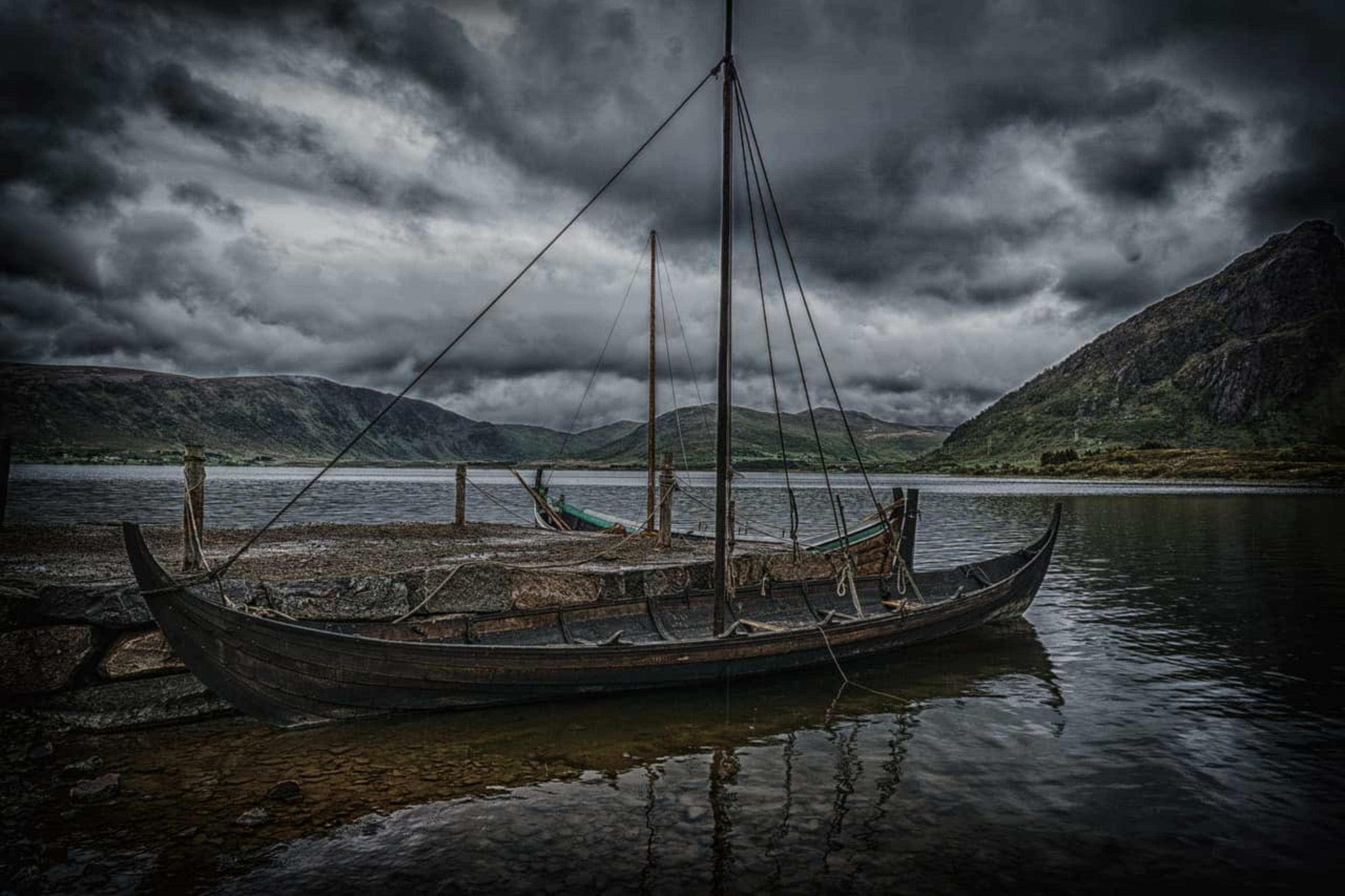
The exhibition focuses on the life and work of the first settlers giving you the tools to really put yourself in their shoes. Imagining what it might have been like to live on this remote island in the middle of the North Atlantic in the 9th century.
The exhibition is a true gem located in the busy downtown area!
8. The Saga Museum
The Saga Museum is conveniently located right down by the harbor in Reykjavík, not far from the hipster district Grandi. It is quite small but an informative museum on the early Icelandic history with great attention to detail. Especially when it comes to the wax figures!
They offer knowledgeable audio guides in multiple languages telling fascinating stories but if you are more on the visual side of things there’s a video too!
9. Visiting Stöng in Þjórsárdalur
For those who became obsessed with Viking tales through shows like Game of Thrones, this place should most definitely be on your Iceland bucket list. This is where they filmed the legendary scene where the Wildlings killed a whole village leaving the young boy, Olly, as the sole survivor.

The farmhouse Stöng in the valley of Þjórsárdalur was reconstructed based on the pre-existing farmhouse from the Commonwealth Era. Its story is quite tragic, as the farm is believed to have been destroyed in one of Hekla’s volcanic eruptions.
When building it they really took their time, carefully making sure that it was accurate and monumental. Today it is in a stellar form allowing visitors to study the architecture of our ancestors and understand their everyday lives.
What other sites are interesting to explore?
The south coast has abundance of sites related to the Vikings and the old sagas. The Dalir region on the edge of the Westfjords is the scene of many Vikings feuds. Last but not least, Borgarfjörður fjord is the home of the boisterous Iceland-born Viking and poet Egill Skallagrímsson.
Start planning your own adventure in Iceland! Check out these vacation packages to find your ideal trip. You can book today with just a 5% deposit.

